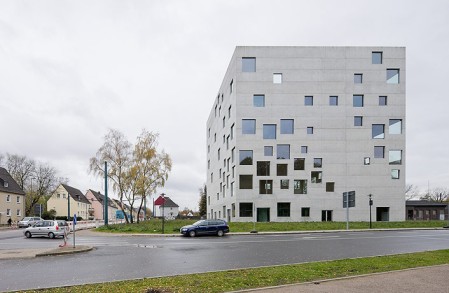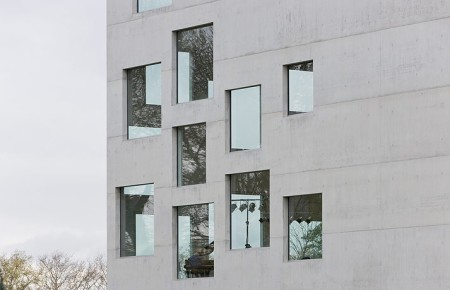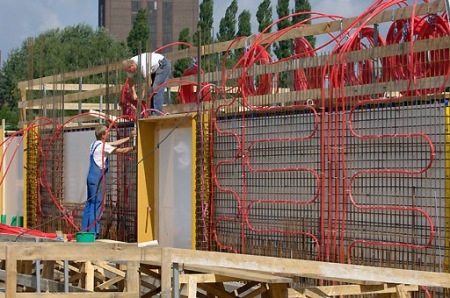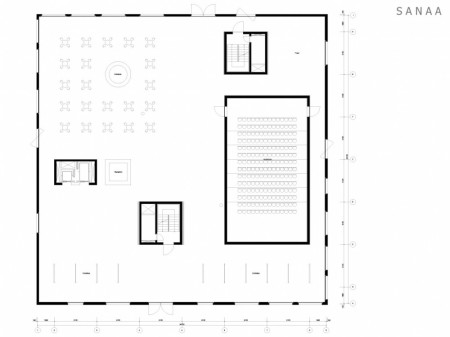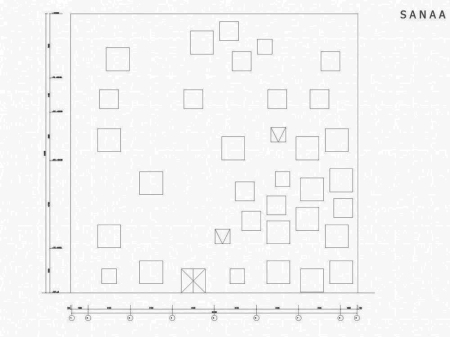Zollverein School of Management and Design is designed by Japanese duo Kazuyo Sejima and Ryue Nishizawa of SANAA in 2002. and is located on a former factory ground in Essen’s suburbs. Building is a 35 meter cube and its presence is dramatic – it is highly contrasting soft built environment.
However, the most interesting fact about this building is not its fantastic boldness but the smart use of existing local energy sources and its envelope as an active surface.
The building’s site was of a great significance – its location in a highly preserved area awarded by UNESCO as World Heritage Site in 2001. and more importantly next to the heavy coal mine, shuttered in 1986, directed aesthetical and technical solutions for the design. Zollverein School was predestined to become the model building for integrated systems and sophisticated building solutions.
Why do we cool and heat buildings with air, when water makes 852 times better medium for heat transfer is a legitimate question and it‘s leading towards smart building solution – technique of thermally active surfaces. In this particular case, the fabric of the building is imbued with a more poignant role: the envelope is a primary heating and cooling system, leaving the inside of the building unexpectedly lofty and flexible.
After the mine was shuttered, the 30°C hot water used to be dumped in Emscher River. Project engineers developed intelligent system which uses waste water for radiant heating and cooling – running it through the heat exchanger into the pipes. Preheated water circulating through the double-layered concrete façade is enabling the absence of thermal insulation and the envelope is allowed to be thick as a structure only. The system also allows greater openings due to free heat energy found on the site.
Usage of water in building surfaces as heating and cooling bodies is more efficient, comfortable and healthy method and the approach sets new standards regarding sustainability – how well the buildings are built, how well they perform and how long they will last.
Effects of this active system on the building design are striking – naked, sleek concrete cube almost becomes a relic of industrial production.
